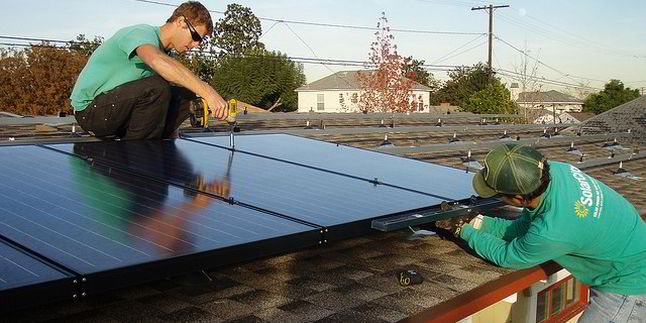SolarCity executives say the all-stock deal potentially worth $350m was driven by the pressing need to make solar cost-competitive without subsidies versus fossil fuel electricity on the grid, and growing concern that the company’s spectacular growth could be stunted by future module supply shortfalls.
“It’s critical you have high efficiency solar panels at a total installed cost as low as possible,” SolarCity chairman and largest shareholder Elon Musk said on a conference call. “The two key elements of that are economies of scale and making sure that fundamental technology being scaled is as best it can be. With the Silevo acquisition, that’s what we believe we can do and are doing.”
Company executives say that privately-held Silevo, headquartered in Fremont, California, has developed so-called Triex tunneling junction technology that produces greater revenue and high efficiency at lower cost due to a simple, proprietary manufacturing process.
SolarCity claims that Silevo’s crystalline-amorphous hybrid cells now have an industry-best 21% conversion efficiency rate scalable soon to 24%.
“The technology is ready to scale,” Musk said, noting this was a key factor in why SolarCity closed the deal after having looked at about 20 takeover candidates. “Many technologies are early phase – not ones you want to invest the capital to do a large-scale deployment.”
As SolarCity builds manufacturing capacity, the company says it will create the world’s most vertically integrated solar company - from modules and mounting hardware to finance, installation, and energy sales – with an industry-leading cost structure.
“We intend to put a lot of emphasis on research and development on the panel side as well as the mounting hardware that we already own, and into inverter and battery pack technology,” Musk said, adding that Silevo employees will bring a lot of innovative brainpower to help do this. SolarCity left the door open to more acquisitions of PV technology companies.
Solar module manufacturing is dominated by China where Silevo has a small plant, but most output there from mainstream suppliers is “relatively basic panels” not advanced ones that SolarCity wants to drive costs down, Musk said.
He adds that even supply of better quality panels from Canadian Solar, Trina, Yingli and others in China is likely to fall short of SolarCity’s needs. Their cost will likely increase if the US imposes, as expected, countervailing duties on Chinese and Tainwanese PV kits.
“We’re quite concerned that two or three years down the road that there will not be enough panel production to supply SolarCity’s needs,” he said. SolarCity’s core downstream installation business intends to install about 500MW of capacity this year, and as much as 1GW next year.
“We ultimately expect to be installing tens of gigawatts per year. If you look at the capacity in the world, it’s simply not going to come online to be able to do that,” he said.
The proposed Buffalo factory, which will utilize low-cost, clean hydropower from nearby Niagara Falls, is not a done deal. The company is still in negotiations with New York State hoping to secure a financial package including low-cost government bonds to help cover part of the construction cost.
SolarCity is promising to eventually create thousands of jobs in a state that has lost a large swath of its manufacturing capacity in recent decades due to the high cost of labor, raw materials and transport, and tax rates above most other states.
Musk and SolarCity chief executive Lyndon Rive did not comment on the plant’s price tag that Raymond James analysts estimated at between $350m and $400m. Rive did say that SolarCity plans to have investment partners in manufacturing but did not provide names.
If all goes as planned, SolarCity would be producing its own modules before 2017, a turning point for the US solar sector, when the current 30% federal Investment Tax Credit is scheduled to drop to 10%.
Musk said the plant will be a pilot “for what will come,” and will likely be expanded into the world’s largest module manufacturing facility. Even then, it will still be too small. “To really achieve economies of scale the factories need to be on the order of 10GW,” he says, adding there is likely to be more than one to supply the world’s energy needs.
He says location of the planned mega-size factories has not been determined. Even with the Buffalo factory in place, SolarCity will continue to need panels from outside suppliers later this decade to meet future growth. Part of the plant's future output will be sent to third parties under contracts done by Silevo.
Silevo was founded in 2007 by two engineers from Applied Materials, and operated in stealth mode until 2011.

